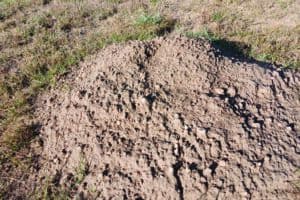Longtime local journalist Bill Radford and his wife, Margaret, live on 5 acres in the Falcon area with chickens, rabbits, dogs, cats, two noisy parrots, goats and two horses. Contact Bill at billradford3@gmail.com
Up in the mountains, the aspens’ annual golden spectacular is underway.The Midwest, where I grew up, is offering its own autumn show: fall foliage thatís not just gold but a majestic orange and fiery red and sun-splashed yellow.The prairie has its own beauty, of course. But as a native Missourian, I miss the abundance of lakes and streams and trees. When we lived in Colorado Springs, we had what we called “the wild part” in our backyard: a mini-forest with scrub oak and conifers; we also had an apple tree, a plum tree and cherry tree. Having all those trees helped make me feel at home. Similarly, I find a sense of peace whenever I visit Black Forest and I’m among the trees there.The prairie? Not so much. One of the lures of the property we bought was the promise of a hundred or so trees mentioned in the real estate listing. That number might have been a bit inflated, but we do have ponderosa pine and cottonwoods and one Colorado blue spruce (designated 80 years ago as the official state tree) and one honeylocust. (We also have a trio of little fruit trees that we planted two years ago.) All of the trees that were here when we moved in seven years ago have grown, but none as spectacularly as the honeylocust. It was barely a tree when we moved here; now it’s the centerpiece of the side yard and a favorite perch for neighborhood birds.The honeylocust is among the Colorado State Forest Service’s “Recommended Trees for Colorado Front Range Communities.” Colorado Springs Utilities’ “Water Wise Plants” site states this about the honeylocust: “Honeylocusts are medium-size shade trees with small leaflets. Because their leaves are small, they cast a light, dappled shade in summer. Most cultivars available at nurseries are thornless and seedless. The fall leaf color is yellow before the leaflets drop and blow away. Honeylocusts are generally very easy to grow and drought tolerant, making them a great choice for the Colorado Springs area.””Trees for Non-Irrigated Regions in Eastern Colorado,” published way back in 1917 by the Colorado Agricultural College Extension Service, describes the honeylocust as “a hardwood tree of moderate growth. Ö The wood is good for fuel, farm repairs, and of fair durability for posts. Ö This species will endure stiff, hard soil and alkali better than other species. Ö Altogether, no species can be more safely recommended for trying conditions in all parts of eastern Colorado.” And a bonus: “The seeds, when ground, are said to have a nutritive value equal to corn as feed for stock.”That 1917 publication was not as enthusiastic about cottonwoods: “Though planted more generally than any other, it is advisable to plant cottonwood only in the moister soils, preferably in tilled bottoms, where it will make a rapid growth.” (“Non-native hybrid poplars/cottonwoods,” meanwhile, are among “Trees to Avoid!” in the Forest Service’s list of Front Range recommended trees.)Sure enough, though our honeylocust has flourished, our cottonwoods have been suffering ever since last year’s dry winter and spring. We’ve been watering, but apparently not enough, and we’ve lost some trees.The Colorado State University Extension Service recommends planting Colorado native trees. “Colorado native trees are naturally adapted to their specific†Colorado climate, soil, and environmental conditions,” according to the extension service. “When correctly sited,†they can be ideal plants for a sustainable landscape that requires reduced†external inputs such as watering, fertilizing, and pruning. In order to†realize these benefits, the planting site must approximate the natural†environmental conditions of the plant in its native habitat.” (For a guide to those trees, go to https://extension.colostate.edu/and type “native tree” in the search window.)While we can thank the previous homeowner for most of the trees on our property, the people of Colorado Springs can thank the city’s founder, Gen. William Palmer, for the tree-lined streets there. Early visitors commented on the area’s “barren, treeless landscape,” according to “Legends, Labors & Loves: William Jackson Palmer, 1836-1909.” Palmer changed that by planting thousands of trees. (“A great nature aficionado,” he also helped found the International Society of Arboriculture.) To celebrate Colorado Springs’ 150th anniversary in 2021 “and carry on Palmer’s vision of a tree-lined city,” City Forestry is challenging the community to help plant 18,071 new trees over the next two years. Keep an eye on the city’s website, https://coloradosprings.gov, for promised future details.





